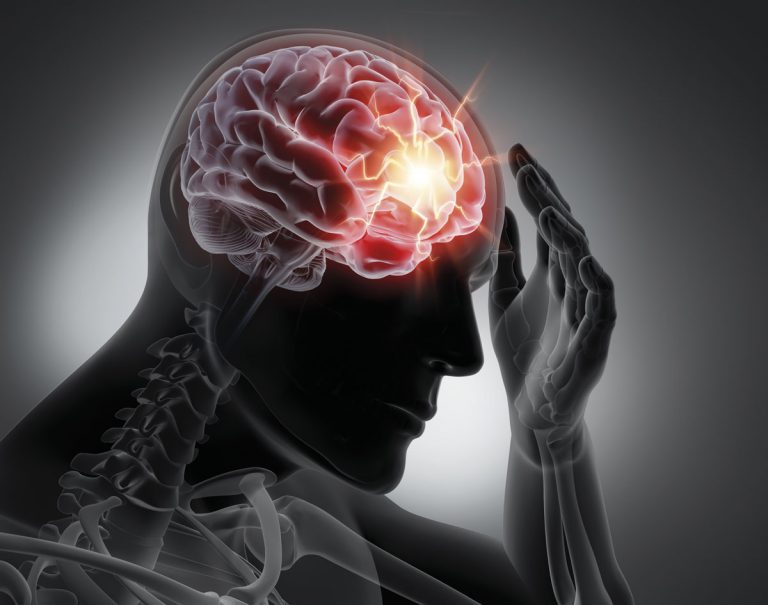Learn about the causes, symptoms, and treatment of stroke the risk factors that you can modify to avoid suffering a cerebrovascular accident, one of the leading causes of disability and death in developed countries.
The term stroke encompasses all pathologies or cerebrovascular diseases (CVD) due to the interruption, momentary or definitive, of the blood supply to some part of the brain, which appears suddenly.
The brain, like any other organ, receives blood for its function through the arteries. These nourish you with oxygen and glucose, which are the main foods in the brain.
When the blood flow stops reaching some area of the brain, the functions of that area can be altered, temporarily if the irrigation has recovered (TIA or transient ischemic attack, without producing a heart attack); or definitively, if the flow has stopped for a significant time and the brain cells have been damaged.
According to the WHO, cerebrovascular disease is the third leading cause of death in adults after ischemic heart disease and cancer.
Although its incidence remains stable, since it is directly related to aging, we witness a decrease in mortality figures in recent years due to diagnostic and therapeutic advances. However, approximately one in two cases does not recover from a stroke, as it causes death or severe disability in 50% of those affected.
Stroke is also the number one reason for permanent physical and intellectual disability in adults; and the second reason for dementia after Alzheimer’s disease.
Types of stroke
The types of stroke can be classified according to the vascular phenomenon that has caused them. Mainly, two main types of stroke are distinguished: ischemic stroke and hemorrhagic stroke.
Ischemic stroke: cerebral infarction and TIA
This type of stroke is the most common. It occurs when the artery’s clogging occurs, which prevents blood from reaching an area of the brain. When this happens, neither oxygen nor nutrients arrive, and cells are injured. It is known as cerebral ischemia, and if the lack of blood supply is prolonged, cerebral infarction occurs. In this case, the tissue has already died. The occlusion may be due to a thrombus, the presence of a tumor compressing the artery, or a clot (usually sent from the heart). It is considered a stroke if cell death occurs in the brain, spinal cord, or retina.
When the flow is not obstructed for a significant period, these attacks are known as Transient Ischemic Attack (TIA). Currently, the difference lies not so much in the time of ischemia because it does not produce cerebral infarction. Because of this, they are usually evaluated by the doctor when they have already passed. The symptoms are very varied, depending on the brain area that has been exempt from irrigation (see section Symptoms of stroke), and the risk factors are the same as in cerebral infarction.
These types of attacks, even if they revert spontaneously, should be evaluated by a neurologist. Since it is important to know if the brain tissue has been damaged and because people who have suffered TIA have a higher risk of ending up suffering a longer ischemic stroke in time, the cerebral infarction and the death of a part of the brain appear.
Hemorrhagic stroke
In this case, much less frequent, the problem is the rupture of an artery, which can be intracerebral (within the brain) or on the brain’s surface (near the layers that surround it, the meninges). In the first case, the cause is usually associated with hypertension in the artery (which ruptures and produces intracerebral bleeding) and, less frequently, malformations in the vessels.
In the second, the cause is more often a head injury(a blow or fall) or dilation of the artery (aneurysm), which causes the wall of the artery to no longer expand and rupture, releasing blood into the space between the brain and the meninges (subarachnoid hemorrhage).
In addition to not nourishing the brain cells, this blood can create pressure on the brain, causing damage. These damages are usually more serious than those caused by an ischemic stroke. Some brain infections, certain tumors, and the use of certain drugs can also cause bleeding.
Risk factors for stroke
Cerebrovascular disease is associated mainly with age, sex, race, and family history ( risk factors for non – modifiable stroke ). Still, their main threats are hypertension, diabetes, hypercholesterolemia, snuff, and some arrhythmias ( factors modifiable stroke risk ).
The former (the non-modifiable ones) cannot be avoided. However, people in these groups may benefit from more rigorous controls of the modifiable risk factors for stroke described in the prevention section.
- Age: according to numerous studies, from 55, the appearance of stroke is more frequent. It is estimated that approximately 20% of those over 65 have a high risk of suffering a stroke in the next ten years. According to the WHO, in 2050, this percentage could rise to 30%.
- Race: Black and Hispanic Americans appear to be more susceptible to stroke. Although it is believed that it may be because black people are more prone to high blood pressure and diabetes, it is not clear that these factors explain the high incidence of stroke in certain races.
- Family history: If a person has a stroke and cerebrovascular disease, patients in their family have a higher risk of suffering some type of cerebrovascular accident, in part due to the genetic inheritance of some of the risk factors.
Arterial hypertension, diabetes, tobacco, cholesterol, and some arrhythmias are, by different mechanisms, the main factors by which the arteries are clogged and produce ischemia in the brain territory. Its control is essential to reduce the risk of stroke.

